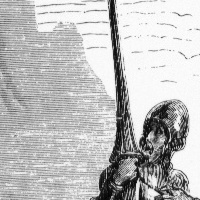Link: Gelman, Dickens, Coincidences and Network Sampling
To continue with the Christmas theme: What Charles Dickens’ works have to do with statistical concept of network sampling? (A. Gelman, “Learning about networks using sampling”, 2016. TBA *Journal of Survey Statistics and Methodology).
Not that much, but nevertheless: Suppose you want to create a literary microcosm of a society that has similar properties and the general “character” as the real social world it’s an image of, but for the purposes of novel, your sample needs to be manageable in size. If you took a true random sample from a realistic social network, you’d end up with a collection of nodes with scarcely any connections between them, and you’d have no novel. Or not a very coherent one.
So, to be able to create such a novel in the first place, you’d need to introduce strange, far too unlikely coincidences so that it’s the other nodes in your sample (i.e. characters of the story) the nodes in your sample meet, not the inordinate number of other people they realistically would. And thus you can keep the number of characters small enough for a novel-length story, instead of the hundreds (thousands?) secondary and tertiary characters?
I don’t think the idea is new amongst the literature people, but the formal, mathematical viewpoint might be. I’d love to read if someone actually did the number crunching and analysis.
The wider picture and connection to statistics is this: Usually statisticians want to use random, small samples from the population, but such samples don’t necessarily share the same structure as the original network; and what if it’s the network structure of the population we are interested in? Read the original text.
Via Gelman’s blog: Survey research, network sampling, and Charles Dickens’ coincidences.
Also, comment page is once again golden. “Slugger” points out that some other authors manage to work with a realistically non-random sample (for example, the titular family Karamazov in Karamazov brothers by F. Dostoyevsky.)
And how does this connect with Guare’s Six degrees of separation / Milgram’s small world?
